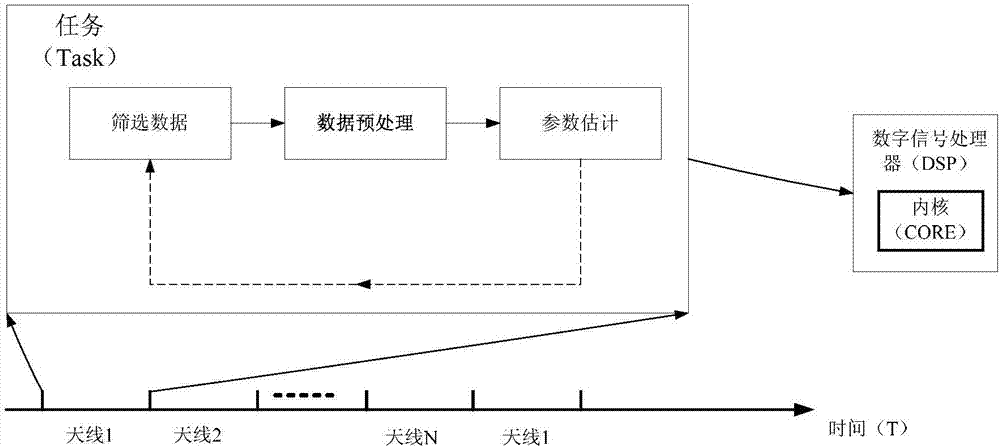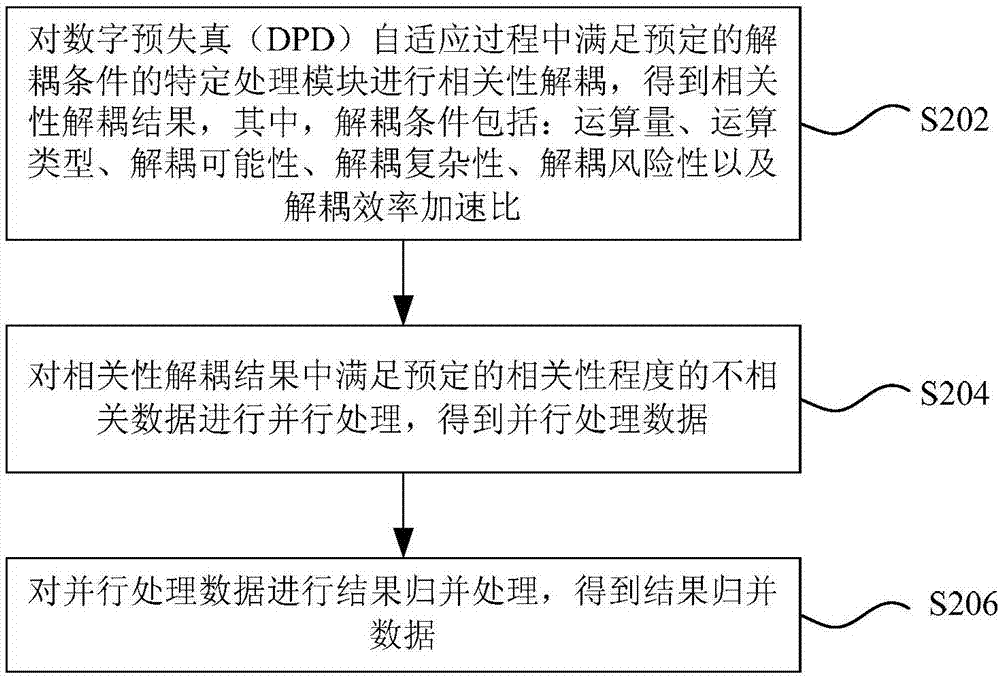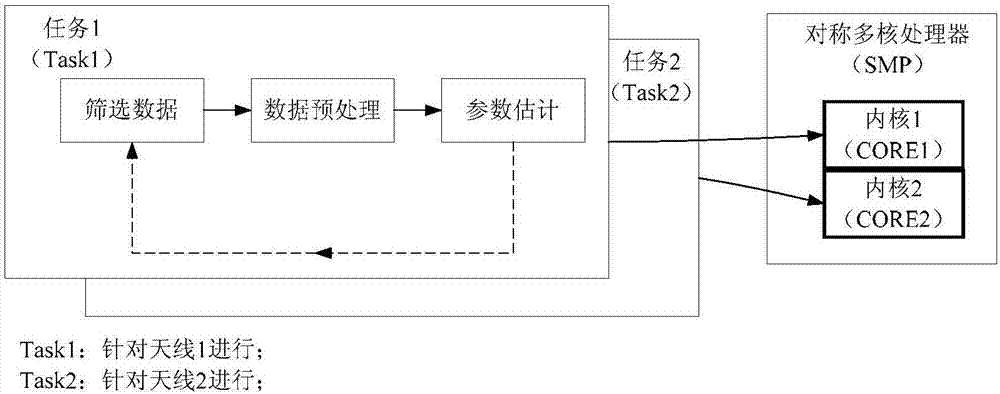DPD adaptive method and device based on symmetric multiprocessor
A symmetric multiprocessor and self-adaptive technology, applied in the field of communication, can solve the problems of slow self-adaptation rate, long convergence time, inability to adapt to multi-antenna DPD scenarios, etc., to improve execution speed, improve system efficiency and performance, and speed up DPD The effect of the adaptive process
- Summary
- Abstract
- Description
- Claims
- Application Information
AI Technical Summary
Problems solved by technology
Method used
Image
Examples
Embodiment 2
[0131] The two antennas share certain resources, mainly hardware resources. The adaptation process of the two antennas is not time-synchronized. For example, Antenna A has finished acquiring sample data and is entering into parameter estimation; while Antenna B is acquiring sample data. At this time, when the two tasks are scheduled to different processor cores of the SMP, their loads are unbalanced. In order to improve processor load balance in similar scenarios, make full use of processor capabilities, and speed up DPD self-adaptation, at the same time, large-scale, high-density key computing modules are implemented in parallel.
[0132] Step 1: Analyze the process and data processing that can be decoupled in dual-antenna DPD adaptation
[0133] Please refer to Figure 11 , Figure 11 It is a schematic diagram of the parallelization structure of two antennas and key modules according to the preferred embodiment of the present invention. At the same time, the parallelizat...
PUM
 Login to View More
Login to View More Abstract
Description
Claims
Application Information
 Login to View More
Login to View More - R&D
- Intellectual Property
- Life Sciences
- Materials
- Tech Scout
- Unparalleled Data Quality
- Higher Quality Content
- 60% Fewer Hallucinations
Browse by: Latest US Patents, China's latest patents, Technical Efficacy Thesaurus, Application Domain, Technology Topic, Popular Technical Reports.
© 2025 PatSnap. All rights reserved.Legal|Privacy policy|Modern Slavery Act Transparency Statement|Sitemap|About US| Contact US: help@patsnap.com



